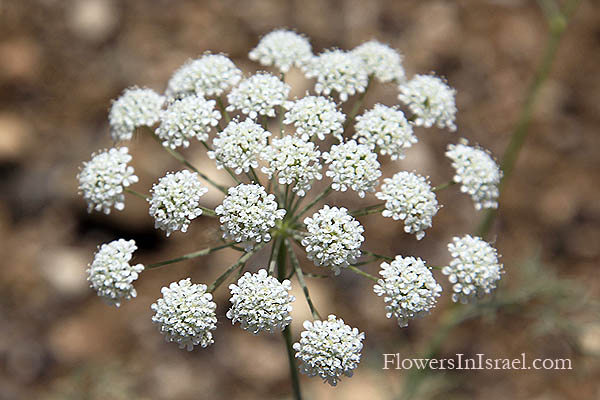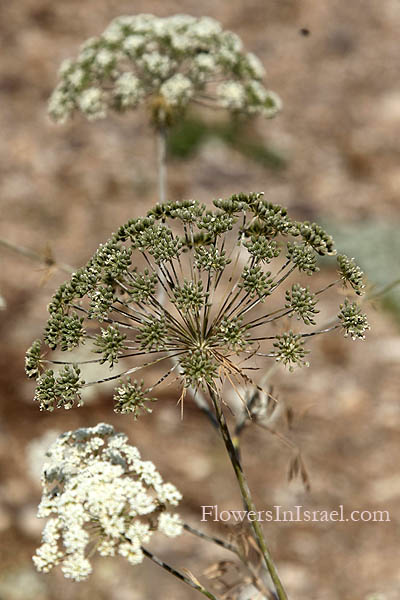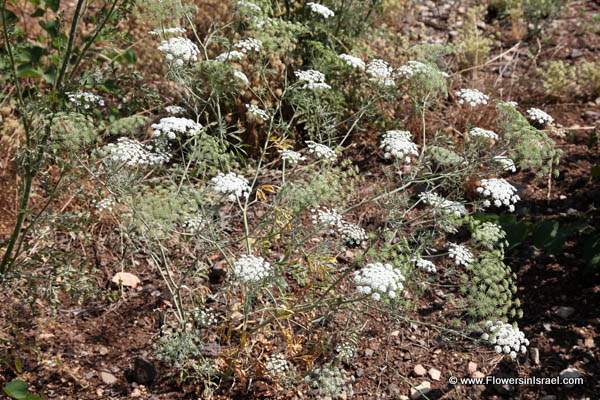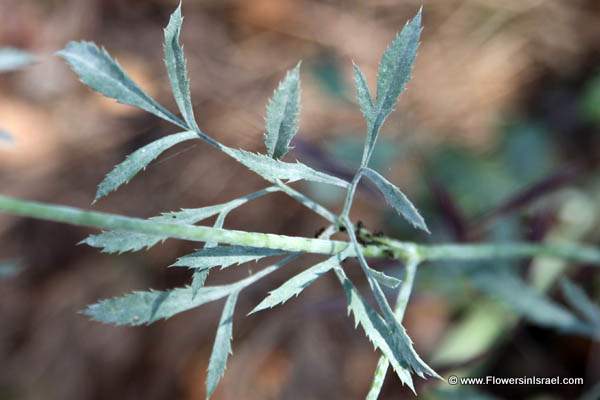Hebrew: אמיתה גדולה, Arabic: الخلة الشيطانية, Egypt: خله شيطاني "Khilla Shitani"
| Scientific name: | Ammi majus L. | |
| Common name: | Bishop's weed, Queen Anne's lace, Ammee | |
| Hebrew name: | אמיתה גדולה | |
| Arabic name: | الخلة الشيطانية | |
| Egypt: | خله شيطاني "Khilla Shitani" | |
| Family: | Umbelliferae / Apiaceae, סוככיים |

|
| Life form: | Therophyte, annual | |
| Stems: | 90–150 cm high with striated subglaucous stems | |
| Leaves: | Alternate, rosette, dissected, dentate or serrate | |
| Inflorescence: | Umbels compound, scabrous; peduncle 8-14cm; rays 20-60, 2-7cm, slender; pedicels 1-10mm | |
| Flowers: | Calyx lobes minute; petals wide, white, tips 2-lobed | |
| Fruits / pods: | Fruit laterally compressed, oblong, mericarps of the cremocarp separated by a carpophore; seed small, pendulous, albuminous | |
| Flowering Period: | March, April, May, June, July, August, September | |
| Habitat: | Cultivated areas, roadsides, field margins | |
| Distribution: | Mediterranean Woodlands and Shrublands, Semi-steppe shrublands, Shrub-steppes, Deserts and extreme deserts, Montane vegetation of Mt. Hermon | |
| Chorotype: | Mediterranean | |
| Summer shedding: | Ephemeral |

Derivation of the botanical name: Ammi (Dioscorides), from the Greek term ammos meaning “sand” and refers to the plant’s habitat. majus, bigger, larger. The Hebrew word: אמיתה, amita is mentioned in the Tosefta (Jewish Babylonian Aramaic תוספתא "supplement, addition"; created / edited in Talmudic Israel (approximately 190 - 230 AD)) as a spice plant: "וכן באמיתא וכן בפיגם וכן בשאר מיני תבלין. מאי אמיתה ניניא", "And in Amita and in Pigm and in other kinds of spice. May true Amina Nina".


|